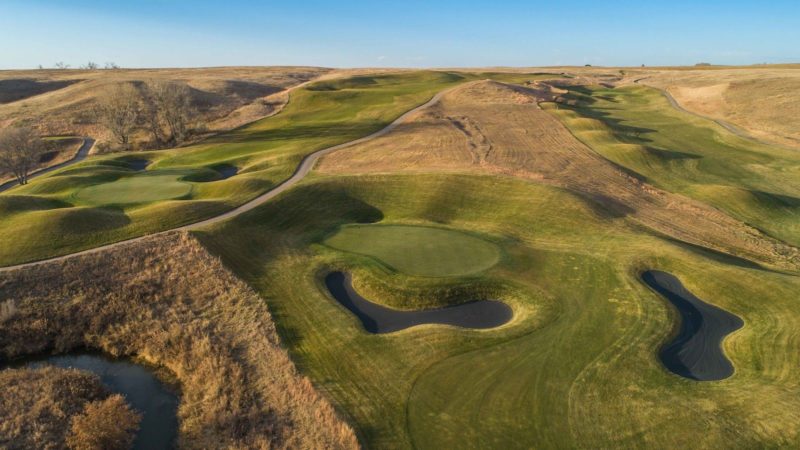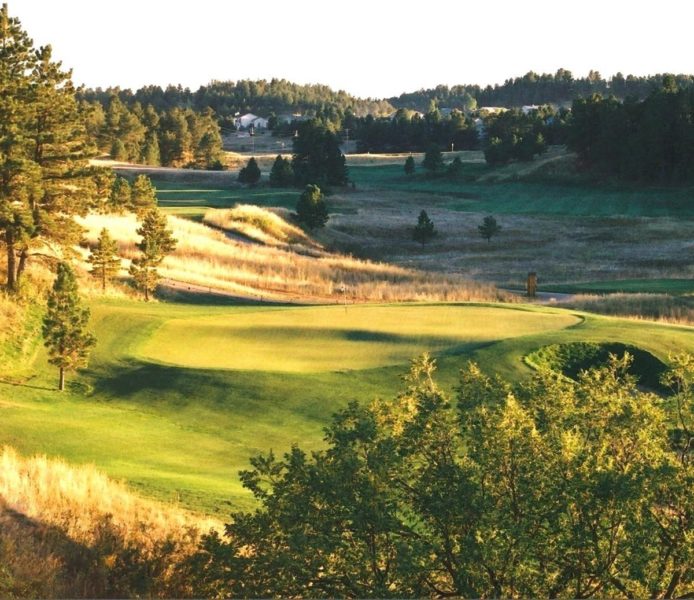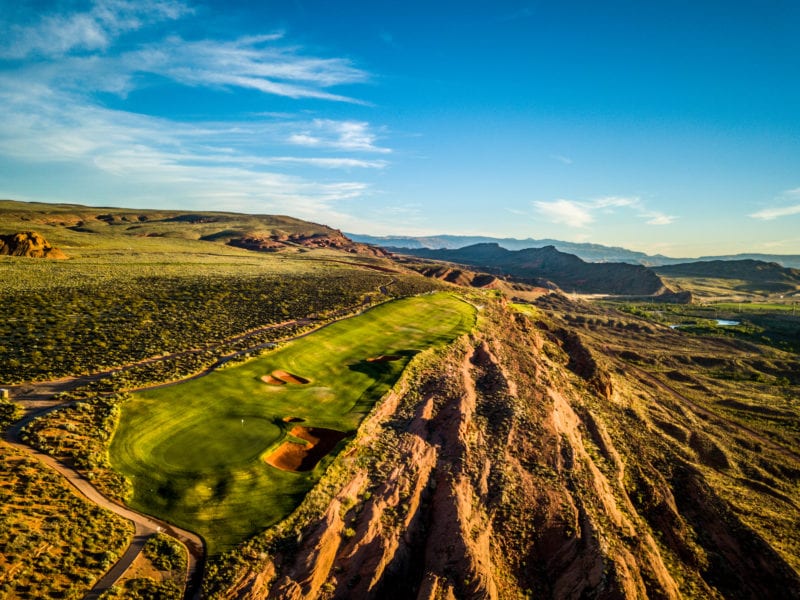Golf is a sport for everyone on these top-ranked courses
Golf is a sport for everyone, but too many times it seems that the best places to play are restricted by privacy and membership barriers born in the “country club” era of exclusivity.
The good thing is plenty of the designers of the nation’s great private courses have also fashioned tracks that welcome all players. If golfers have the inclination and the cash needed for the respective green fee, they can play courses routed by the likes of legendary architects like Pete Dye (whose name is mentioned the most in the following list), Jack Nicklaus, Tom Fazio, and Robert Trent Jones, Jr, et al.
Our list of the best public course in each state was compiled by picking the brains and opinions of noted golf professionals, course architects, journalists, and – mostly – golfers. While it’s always fun to be on the golf course, it’s even better to play really good ones, and our panelists know their stuff.
It was a surprise to see that more than a fourth of the courses listed below (29, in fact) were established in 1980 or later, and that 16 of those have opened since the turn of the 21st century. Eight of the courses on the list welcomed their first golfers prior to 1930, so there’s plenty of representation from the Golden Age of course architecture here, as well.
This list (which is the third of a three-part series) includes courses golfers have seen on broadcasts as hosts of PGA Tour events, as well as a state park course, plenty of resort tracks, a course managed by a company that’s was once owned by the President of the United States, and even a nine-hole facility.
North Dakota

The Links of North Dakota
Location: Ray
Established: 1995
This course presents golfers with an authentic links style experience routed on the bluffs overlooking Lake Sakakawea. Set in the heart of the areas Bakken Oil Formation, architect Stephen Kay moved a minimal amount of dirt in placing this course on the rolling land with wide-open fairways, and punishing native prairie-grass rough. Players can expect some uneven lies as they navigate this world-class venue.
Ohio

Manakiki Golf Course
Location: Willoughby
Established: 1928; Renovated: 1961, 1990.
This is an elegant public course with a classic Donald Ross design offering a huge variety of challenges including doglegs, water hazards, uphill and downhill shots, back-to-back par 5s, and more. Named after a native American word for maple forest, this course’s defining feature is the abundance of maples that line the winding fairways.
Oklahoma

Karsten Creek Golf Club
Location: Stillwater
Established: 1994
This Tom Fazio design, the home of the Oklahoma State golf teams, is one of the most challenging tests in the South and one of the highly touted public courses in the nation. The track features several changes in elevation throughout the routing that’s carved through majestic oaks and around Lake Louise. The finishing holes are some of the most dramatic on the property as they play around the lake and offer sparkling views.
Oregon

Bandon Dunes Golf Course
Location: Bandon
Established: 1999
This course was the first at the bucket-list Bandon Dunes Golf Resort, and was the track that for the first time in American golf history had players running to golf along the Oregon coast. Designed by David McLay Kidd, this is a thinker’s course, with a routing perched on a bluff high above the Pacific Ocean and unfolding along pristine native dunes. Beyond breathtaking scenery offers the game of golf in its truest form.
Pennsylvania

Nemacolin Woodlands Resort (Mystic Rock)
Location: Farmington
Established: 1995
The course, designed by Pete Dye as a centerpiece to a 2,000-acre casino-resort, is partially a golf experience and partially a visual and art experience, with a large waterfall next to the fifth green, rocks creating retaining walls for fairways and water features, and multiple statues on display. While plenty challenging, the course is more forgiving than other Dye layouts and worthy of its distinction as one of the finest casino resort destinations in the country.
Rhode Island

Newport National Golf Club (Orchard Course)
Location: Middletown
Established: 2002
The track, which started out as a landscape nursery, was designed by Arthur Hills and sports sloping fairways, marshes, and strategically placed bunkers. The dramatic setting boasts views of the Atlantic Ocean and the Sakonnet Passage, while challenging golfers with steady winds coming off of the Narragansett Bay. It features a diverse set of holes in a near-links-like routing.
South Carolina

Sea Pines Resort (Harbour Town Golf Links)
Location: Hilton Head Island
Established: 1969
Designed by Pete Dye, this is one of the most demanding courses in the world. From tee to green, golfers need to think their way around the course and often execute near perfect shots to have any success. It’s widely regarded as one of the finest shot-making courses under 7,000 yards in the country. Harbour Town’s signature feature is the red and white lighthouse located beyond the 18th green and acts as a reminder of the course’s proximity to the ocean and the ability of high winds to rip through, and swirl within, the course.
South Dakota

The Golf Club at Red Rock
Location: Rapid City
Established: 2003
Routed through the Black Hills terrain this course features lush fairways surrounded by native grasses and tall ponderosa pine trees. Dramatic elevation changes, links-style bunkers and USGA specification greens characterize this hilly, championship track. The Ron Ferris-designed track is reputed to be the only course in the state to stay open every month of the year.
Tennessee

The Course at Sewanee
Location: Sewanee
Established: 1915; Renovated: 2013
The only nine-hole course on this list was renovated by Gil Hanse, who kept the original hole routing but reimagined, redesigned and rebuilt almost every other aspect of the course – including all of its green complexes the adding of challenging new bunkers, and developing a distinct set of alternate tee. The work was ever mindful of the delicate ecosystem on the Cumberland Plateau.
Texas

Black Jack’s Crossing
Location: Lajitas
Established: 2010
The Lajitas Resort is in the middle of the Big Bend National Park and is a definite oasis in an otherwise inhospitable region. The course, designed by Lanny Wadkins, has fairways lined with cottonwoods, palm trees, and grapevines ranging from wide open to narrow and contoured. The routing is over level river bottom land through the desert and foothills around water hazards and traps. It’s like playing golf on the moon.
Utah

Sand Hollow Golf Club
Location: Hurricane
Established: 2008
This John Fought design is highlighted by its mind-blowing back nine. Holes 11-15 represent one of the most dramatic such stretches in the country and includes a driveable par 4, mind blowing par 3, and a 525-yard par 4 that all play along the canyon rim. Playing over, along, and through orange canyons and rock outcroppings at this desert course is what puts this course among the elite tracks in the state.
Vermont

Jay Peak Golf Course
Location: Jay
Established: 2006
The natural mountainous beauty of the Northeast Kingdom bursts through every hole on this course, which features natural waterways and a routing through the bucolic northern Vermont woods. Wildlife cloaks each hole, providing a silent gallery for your every shot as course designer Graham Cooke was successful in incorporating the surrounding natural wonders to the benefit of this hillside track.
Virginia

The Highland Course at Primland Resort
Location: Meadows of Dan
Established: 2006
Unlike any other course is the region, this is a mountain adventure golfers love to play and won’t soon forget. Impressive vistas and pristine conditioning are the call of the day in a secluded location and course routed by Donald Steel. The track is characterized with some of the largest greens you’ll ever encounter, large elevation changes, and wide fairways that help with the playability.
Washington

Chambers Bay Golf Club
Location: University Place
Established: 2007
Built in a former rock quarry covered in sand, the course sits down in a giant bowl bordered by the railroad and Puget Sound on the west. The true links-style course designed by Robert Trent Jones Jr. features no interior water hazards, a single tree, and virtually no place to lose a ball. The huge undulated greens compliment the expansive fairways that sprawl around the large sand dunes and bunkering systems. This course was the host of the 2015 U.S. Open.
West Virginia

The Greenbrier (The Old White TPC)
Location: White Sulphur Springs
Established: 1914; Renovated: 2005, 2017.
A turn-back-the-clock resort combined with a classic C.B. Macdonald course creates a classy and memorable experience that many consider the finest golf destination in the nation. Several famous template holes are found here and are highlighted by the Biarritz, Redan, and Eden par 3s. It’s a superbly conditioned resort course where the public can experience turn of the century architecture.
Wisconsin

The Golf Courses of Lawsonia (Links Course)
Location: Green Lake
Established: 1930; Renovated: 2014.
This course is simply one of the most underrated golf experiences in the country. The course has a very cool, old school look and vibe with generous driving corridors. The natural movement of the property combined with what designers William Langford and Theodore Moreau did with the architecture results in one compelling challenge after another. There’s a unique sequencing of holes starting with the ninth hole that goes par 5-3-5-3-5-3 before finally getting to a par 4.
Wyoming

Teton Pines Resort
Location: Wilson
Established: 1987
Designed by Arnold Palmer, first-time visitors will be surprised at how flat the course is considering the impressive mountain surroundings that are so iconic in the Jackson area. Set at an altitude of more than 6,000 feet, the layout is a shot maker’s course and careful consideration must be heeded on virtually every stroke. It’s characterized by strategic white-sand bunkers, rollicking putting surfaces, and most notably, water hazards on a majority of the holes.
(End part 3 of 3)


